Latest News
GVC Holdings: Q1 Trading and COVID-19 Planning Update

 Reading Time: 7 minutes
Reading Time: 7 minutes
GVC Holdings PLC, the global sports betting and gaming group, today reports trading for the period from 1 January to 31 March 2020 (“Q1”) and provides a further update on the impact of COVID-19 and the mitigating actions being taken. This follows the Group’s previous announcements of 16 and 17 March 2020.
Summary
- GVC started the year well, with Group net gaming revenue (“NGR”) +1% and Online NGR up +19%cc1 in the first quarter
- However, the closure of retail outlets and the cancellation of sports events significantly reduced revenue from mid-March
- In previous announcements the Group estimated the impact of COVID-19 before any mitigating actions equates to a reduction in EBITDA2 of approximately £100m3 per month
- However, following the initiation of a number of mitigating actions the Group now expects to reduce this EBITDA impact to approximately £50m per month
- As a result, the average monthly cash outflow would be limited to approximately £15m per month, and the Group is confident that further cost actions will enable it to achieve its target of reducing the cashflow to breakeven
- The Group’s financial position remains robust, however given the ongoing uncertainty regarding timings of the easing of shutdown measures around the world, the Board has taken the prudent decision to withdraw the second interim dividend that is due for payment on 23 April 2020
Kenneth Alexander, GVC’s CEO, commented:
“As our Q1 trading numbers once again demonstrate, GVC is a business that, in normal times, delivers an outstanding performance. However, while our global and product diversification is standing us in good stead during the current uncertainty, the COVID-19 pandemic is posing an unprecedented challenge to our business and our industry. We are responding decisively, and have put in place a range of measures to keep our people safe, strengthen our financial position, limit cash outflow, preserve jobs and maintain a compelling customer offer. I am confident that we will emerge from this period in a position of strength, and we will be well placed to take advantage of a range of attractive growth opportunities which we believe will be available to us.
“We are also sensitive to the fact that at this time of economic stress and isolation, it is vital that we ensure a safe, responsible and enjoyable gaming environment for our customers and do everything that we can to minimise the potential for harm. Accordingly, not only have we supported the Betting and Gaming Council’s 10 pledge action plan on safer gambling, but we have gone further and introduced a range of additional safeguarding measures to ensure that we are able to rigorously monitor and protect anyone who may be vulnerable at this time.
“Finally, I would like to thank our outstanding teams around the world for the manner in which they have rapidly adapted to the challenge, and for their continuing hard work and commitment to ensuring GVC’s long-term success.”
Current trading
In its 2019 full year results on 5 March 2020, GVC reported that the current year up to 23 February 2020 had started strongly. That momentum continued until the Group started to see the impact of COVID-19 on sporting events and store closures in mid-March.
The performance of the Group for the year to 31 March 2020 is set out in the table below, with key highlights as follows:
- Total Group NGR +1% (+2% cc1)
- Online NGR +16% (+19% cc1), with continued strong growth in all major territories
- UK Retail like-for-like (“LFL”)4 NGR -19%
- European Retail NGR -3% (flat cc1) supported by continued market share gains in Italy
- For the period 1 January to 15 March 2020 all divisions performed strongly, supported by favourable sports margins:
- Group NGR +9% (+11% cc1)
- Online performed strongly across both gaming and sports, with NGR +20% (+23% cc1). Since then there has been an encouraging performance in gaming in the absence of sporting events, in line with the Group’s expectations
- UK Retail like-for-like (“LFL”)4 NGR -5% despite the annualisation of the triennial review impacts
- European Retail delivered strong NGR growth at +20% (+24% cc1)
| Period 1 January to 31 March 2020 | ||||
| Total NGR | Total NGR cc1 | Sport Wagers | Sports Margin | |
| Online | ||||
| Sports | 17% | 21% | (12%) | 2.5pp |
| Gaming | 17% | 18% | ||
| Total Online | 16% | 19% | ||
| UK Retail (LFL3) | (19%) | (19%) | (8%) | 3.3pp |
| European Retail | (3%) | flat | (21%) | 3.7pp |
| Total Group | 1% | 2% | ||
For the avoidance of doubt, the guidance provided on 5 March 2020 is withdrawn.
Impact of COVID-19
On 16 and 17 March 2020 GVC provided assessments of the impact of cancellations of sporting events and store closures on Group EBITDA3 for the year to 31 December 2020. These announcements were based on the Group’s modelling which assumed that: a) football is suspended across Europe; b) major sporting events are cancelled or postponed (Aintree, Royal Ascot, Euro 2020 etc); c) horse racing in the UK and Ireland is suspended; d) all retail outlets in the UK, Republic of Ireland and mainland Europe are closed; and e) there would be a modest increase in GVC’s gaming business which accounts for 57% of Online NGR. Taken together, GVC estimated that these events would result in a reduction in EBITDA of approximately £100m3 per month before any mitigating actions. This would break down by the Group’s key reporting divisions as approximately 20% for Online, 63% for UK Retail and 17% for European Retail.
Mitigating actions
GVC’s teams around the world are working hard to reduce costs and re-prioritise activity in order to preserve free cash, whilst continuing to offer its customers great gaming experiences and to position the Group to emerge from the current restrictions in a position of strength. A number of opportunities have been identified so far which reduce costs by approximately £50m per month.
For example, in the UK GVC is eligible to receive the government grant towards employment costs as we furlough retail colleagues and retain them on full pay, as well as the business rates relief, which together the Group estimates will reduce costs by nearly £20m per month.
In Italy and Belgium GVC operates a franchising model where the store operating costs (rent, employment, utility and other costs) primarily reside with the franchisee.
Other measures taken include reductions in online sports marketing, sports content and trading costs.
Resultant estimated cash outflow
After adjusting for the impact on EBITDA, adding additional cash costs incurred (such as interest, capex, tax and other costs) and allowing for retail capex reduction, the average monthly cash outflow would be approximately £15m per month. The Group continues to work through cost mitigation opportunities and is targeting a break-even cashflow per month objective, thereby preserving cash at broadly current levels during this period of retail closures and reduced sporting events.
The following table sets out, for illustrative purposes only, the effect of our modelling and mitigating actions on EBITDA and average cashflow over a month of severe COVID-19 impacts:
| Impacts of COVID-19 and mitigations | Estimated average monthly amounts |
| Consensus EBITDA2 for FY2020 as at 31/1/20 | £65m |
| Total EBITDA impact before mitigating actions | £(100)m |
| Mitigating actions | £50m |
| Net EBITDA | £15m |
| Other cash costs incurred (including capex, interest, tax and other items) after retail capex mitigation | £(30)m |
| Net cash utilisation | £(15)m |
Financial position
GVC is in a robust financial position, with net debt/EBITDA as at 31 December 2019 of 2.69x. The Group had accessible cash of over £350m at 31 March 2020, of which over £250m is cash at hand after excluding cash held on behalf of customers, cash in shops, ringfenced PSP funds and other items which may not be immediately available.
In addition, GVC has a £550m Revolving Credit Facility (RCF) which is currently undrawn. This facility has a financial covenant which is only tested if the facility is drawn by more than 35% at a quarter-end. The covenant measure is calculated on a trailing 12-month pre IFRS 16 basis with a net debt/EBITDA limit of 4X. Unrealised synergies can be added to EBITDA.
GVC currently has two bonds in issue, totalling £500m. One of £100m is due 2022 and one of £400m is due 2023. In addition, the Group has Term Loans of €1,125m and $786m, both due 2024.
Dividend
Due to the ongoing uncertainty as to how long restrictions as a result of COVID-19 will be in place around the world, the Board has taken the prudent decision to withdraw the payment of the second interim dividend of 17.6p per share announced on 5 March 2020. This was due to be paid on 23 April 2020 with a total cash cost of £103m. However, the Board recognises the importance of dividends as a part of shareholder returns and will consider dividends with future results announcements.
2019 Annual Report and Annual General Meeting (“AGM”) and Directors Remuneration
The Group’s annual report for 2019 is today published on the Group’s website at gvc-plc.com. Copies will be posted to those shareholders requesting a hard copy as soon as it is practical to do so. The 2020 AGM was scheduled to be held on 30 April and in normal circumstances an AGM Notice would be circulated with the annual report. Owing to the public health guidance on social distancing, the Board has decided to postpone the AGM. The Group will issue an AGM Notice once the Board is confident it can safely hold a meeting on a specified date.
The 2019 Annual report sets out details of the directors’ 2019 incentive outcomes and 2020 implementation. However, the payment of directors’ 2019 bonuses and the grant of the 2020 LTIP awards have been postponed. The Remuneration committee will consider the impact of COVID-19 on GVC’s performance and remuneration in due course and review the implementation of the policy for 2020 as appropriate.
Notes
- Growth on a constant currency basis is calculated by translating both 2020 and 2019 performance at the 2020 exchange rates.
- As at 31 January 2020, company compiled EBITDA consensus for the financial year to 31 December 2020 was £776.3m on a pre-IFRS 16 basis.
- The £100m approximate impact on monthly EBITDA is derived from the two announcements of 16 & 17 March as follows: The EBITDA impact over 3.5 months of sports and major events cancelations and European Retail closures of approximately £130m – £150m equating to approximately £37m – £43m per month; the EBITDA impact of UK Retail store closures of approximately £45m – £50m per month; and the EBITDA impact of the cancellation of horse racing in the UK & Ireland of approximately £20m- £25m per month. Taking each of these at the mid-point and allowing for overlap derives an approximate monthly impact on EBITDA of £100m.
- UK Retail numbers are quoted on a LFL basis. During the period, there were an average of 3,131 shops in the estate, compared to an average of 3,464 in the same period last year.
About GVC Holdings PLC:
GVC Holdings PLC is one of the world’s largest sports-betting and gaming groups, operating both online and in the retail sector. The Group owns a comprehensive portfolio of established brands; Sports Brands include bwin, Coral, Crystalbet, Eurobet, Ladbrokes, Neds and Sportingbet; Gaming Brands include CasinoClub, Foxy Bingo, Gala, Gioco Digitale, partypoker and PartyCasino. The Group owns proprietary technology across all of its core product verticals and in addition to its B2C operations provides services to a number of third-party customers on a B2B basis. The Group has also entered into a joint-venture with MGM Resorts to capitalise on the sports-betting and gaming opportunity in the US. The Group, incorporated in the Isle of Man, is a constituent of the FTSE 250 index and has licences in more than 20 countries, across five continents.
For more information see the Group’s website: www.gvc-plc.com
Source: Latest News on European Gaming Media Network
This is a Syndicated News piece. Photo credits or photo sources can be found on the source article: GVC Holdings: Q1 Trading and COVID-19 Planning Update

Latest News
Meridianbet Doubles Down on Belgium: New Casino License Unlocks €455m Market Segment
Editor’s Take
Why this matters: This is a classic “Cross-Sell” play. Meridianbet has already spent seven years building a sports betting database in Belgium. By securing this B+ license, they can now monetize those same users with higher-margin casino products (slots, table games) without needing to acquire new traffic from scratch. With the Belgian casino sector growing at 20% year-over-year, this is a significant revenue unlock for the GMGI portfolio.
The Full Story
Meridianbet, the sports betting and gaming operator owned by Golden Matrix Group Inc. (NASDAQ: GMGI), has successfully expanded its regulatory footprint in Europe by securing a B+ online gaming license in Belgium.
The new license (B+ 4016) authorizes the company to launch a comprehensive online casino platform—featuring slots, table games, and automated live games—starting in January 2026. This move significantly broadens the operator’s capabilities in the country, complementing its existing sports betting operations which have been active in the Belgian market for seven years.
Targeting the Largest Market Segment The strategic rationale behind the license is clear: Casino is now the dominant force in Belgian gambling. According to the Belgian Gaming Commission, the online casino vertical generated €455 million in Gross Gaming Revenue (GGR) in 2023, representing a 20.2% year-over-year increase.
By entering this vertical, Meridianbet gains access to the largest and fastest-growing segment of a market that generated a total of €944.6 million last year.
Tech-First Entry Meridianbet plans to deploy its proprietary AI Casino Recommender technology for the Belgian launch. This system analyzes player behavior and preferences in real-time to deliver personalized game suggestions, a crucial differentiator in a highly concentrated market where just ten operators account for 94% of all online wagers.
Regulatory Context Belgium is known for having one of Europe’s strictest regulatory frameworks, characterized by rigorous compliance standards and player protection protocols. Securing this license validates Meridianbet’s operational standards and deepens its foothold in a “mature” market that is notoriously difficult for new entrants to penetrate.
The post Meridianbet Doubles Down on Belgium: New Casino License Unlocks €455m Market Segment appeared first on Gaming and Gambling Industry Newsroom.
Latest News
LinkDataMedia Drops ‘Startup’ Look with Major 5th Anniversary Rebrand
Editor’s Take
Why this matters: In the iGaming affiliate space, the five-year mark is a critical survival threshold. Many media startups fade away before reaching it. LinkDataMedia’s decision to rebrand now is a classic “graduation” signal. By shedding their startup skin for a more corporate, “blue-chip” aesthetic (the stability-focused blue triangle), they are telling operators and partners that they are no longer just an affiliate project, but a stable infrastructure partner ready for larger commercial deals.
The Full Story
LinkDataMedia, the parent company behind the popular affiliate portal Gamblers Connect, has announced a comprehensive corporate rebrand to coincide with its fifth anniversary.
The overhaul includes a completely refreshed brand identity, a redesigned logo, and a fully revamped website, all of which are now live. The move is described by the company not as a mere cosmetic update, but as a strategic pivot designed to distance the business from its “startup roots” and reflect its current status as an established player in the competitive iGaming media landscape.
Visualizing Maturity The new visual language features a modernized blue triangular logo, a shape chosen to represent “stability and forward momentum.” The digital user experience has also been streamlined, offering partners a cleaner interface that aligns better with the company’s matured operational capabilities.
Management Commentary Gjorgje Ristikj, Founder and CEO of LinkDataMedia, commented on the significance of hitting the half-decade milestone in such a volatile industry:
“Surviving the first five years in business takes more than luck. It takes belief, resilience, and the right people around you. This milestone, and the rebrand, reflect exactly that.”
Implementation The new branding has already been deployed across the main corporate website and is currently being rolled out across LinkDataMedia’s social media channels and internal communication platforms. As the company enters its sixth year, the refreshed identity aims to set the stage for a new phase of expansion and innovation.
The post LinkDataMedia Drops ‘Startup’ Look with Major 5th Anniversary Rebrand appeared first on Gaming and Gambling Industry Newsroom.
Latest News
Win Systems to Debut New ‘Gold Club Colors’ and WIGOS Upgrades at ICE Barcelona
Editor’s Take
Why this matters: As ICE makes its historic move to Barcelona, established tech providers like Win Systems are under pressure to bring their “A-game” to the larger venue. The focus here isn’t just on cabinets; it’s the ecosystem. By highlighting WIGOS (their CMS) alongside WIN PAY, Win Systems is positioning itself as an infrastructure partner, not just a hardware supplier. The debut of the Gold Club Colors roulette specifically targets the growing demand for visually customizable electronic table games (ETGs).
The Full Story
Win Systems, the global provider of technology for the gaming and entertainment industry, has confirmed its product roadmap for ICE Barcelona 2026, the sector’s most significant international event taking place from January 19 to 21.
Exhibiting at Stand 3M30 at the Fira Barcelona Gran Via, the company will leverage the new venue to showcase a broad portfolio designed to cover the entire casino floor—from management systems to the gaming floor itself.
Systems and Fintech At the core of the showcase is WIGOS, the company’s flagship Casino Management System (CMS). WIGOS is widely recognized for connecting thousands of machines across multiple countries, and the Barcelona display will focus on advanced tools that streamline daily operations and optimize player retention.
Complementing the CMS, Win Systems will present WIN PAY, its secure transaction platform. As cashless and seamless payment solutions become standard requirements for operators, WIN PAY offers the necessary efficiency and security controls for modern gaming environments.
Hardware: Roulette and Slots On the hardware side, Win Systems is refreshing its electronic table game offering with the new Gold Club Colors electronic roulette. The Gold Club line has long been a staple in the company’s portfolio, known for its compact footprint and reliability; the “Colors” iteration promises to maximize visual impact on the floor.
Alongside the roulette, the company will display its latest slot hardware, including the Sublime and Rhapsody cabinets. These units are designed to house the company’s extensive game library, which has been adapted to suit diverse market profiles from Europe to Latin America.
Strategic Goals Win Systems aims to use the three-day event to reinforce its 30-year legacy in the industry. The company described its participation as a commitment to “continuous innovation,” inviting operators and regulators to explore how their integrated solutions can improve in-room performance.
The post Win Systems to Debut New ‘Gold Club Colors’ and WIGOS Upgrades at ICE Barcelona appeared first on Gaming and Gambling Industry Newsroom.
-

 Latest News2 weeks ago
Latest News2 weeks agoSCCG Announces Strategic Partnership with Yellow Elephant Studios to Expand Multi-Channel Gaming Content Worldwide
-
Latest News3 months ago
Announcement: 25th September 2025
-
Latest News2 months ago
JioBLAST Launches All Stars vs India powered by Campa Energy: A New Era of Creator-Driven Esports Entertainment
-
eSports1 month ago
CS:GO Betting Gains Momentum in the iGaming Sector
-
Latest News3 months ago
The Countdown is On: Less Than 3 Months to Go Until The Games of The Future 2025 Kicks Off in Abu Dhabi
-
Latest News3 months ago
Evolution launches Sneaky Slots — a Bold New Slot Studio
-
Latest News2 weeks ago
THE 2025 PUBG MOBILE GLOBAL CHAMPIONSHIP GROUP STAGE WRAPS UP WITH LAST CHANCE IN SIGHT
-
Latest News3 months ago
Leading The Charge! Euronics Group Joins LEC As Official Electronics Retail Partner




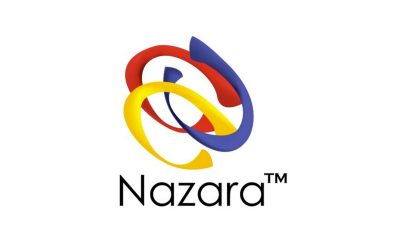







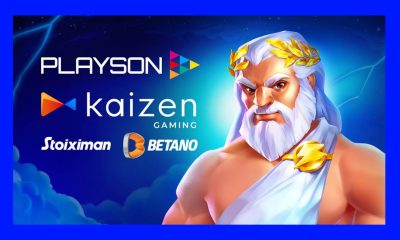


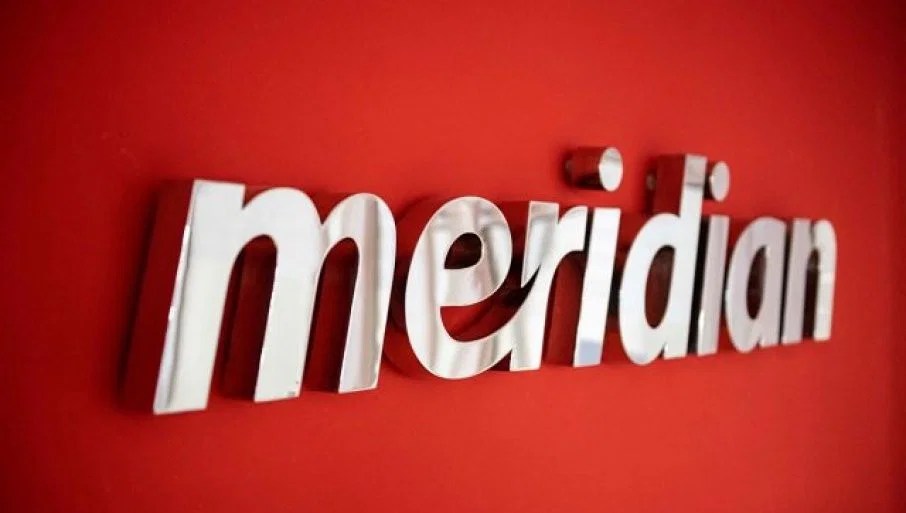



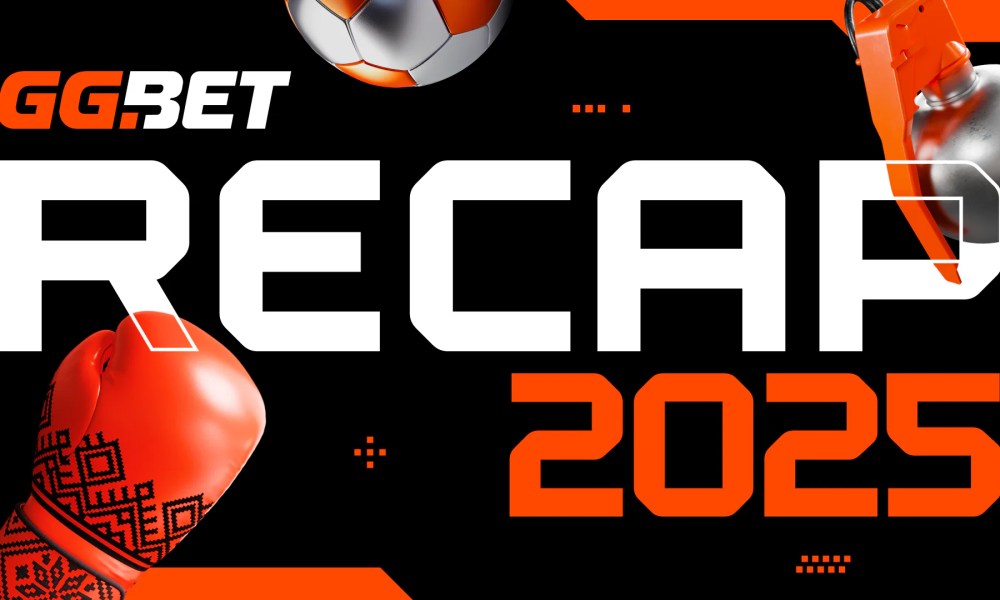



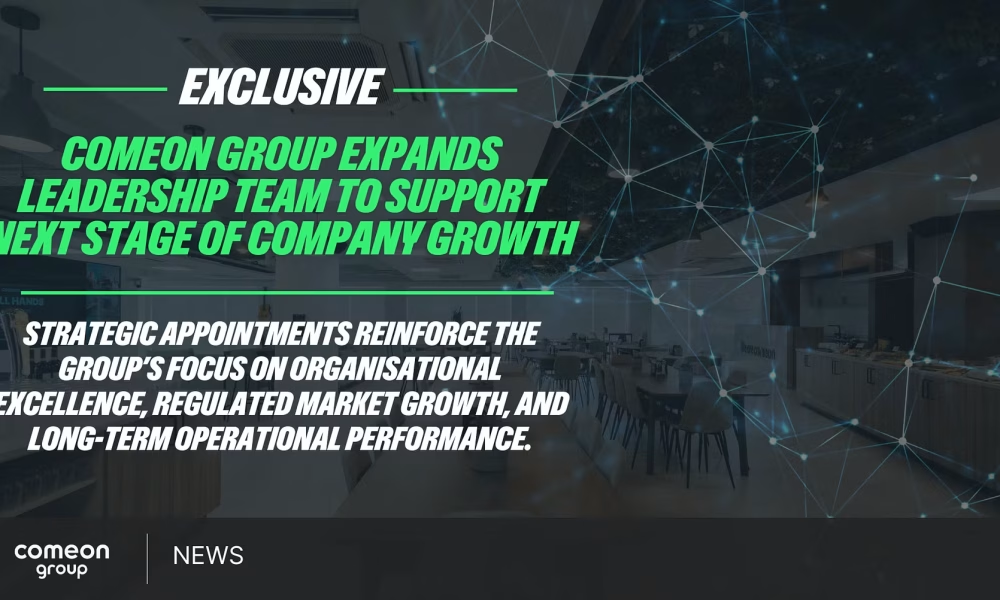

You must be logged in to post a comment Login